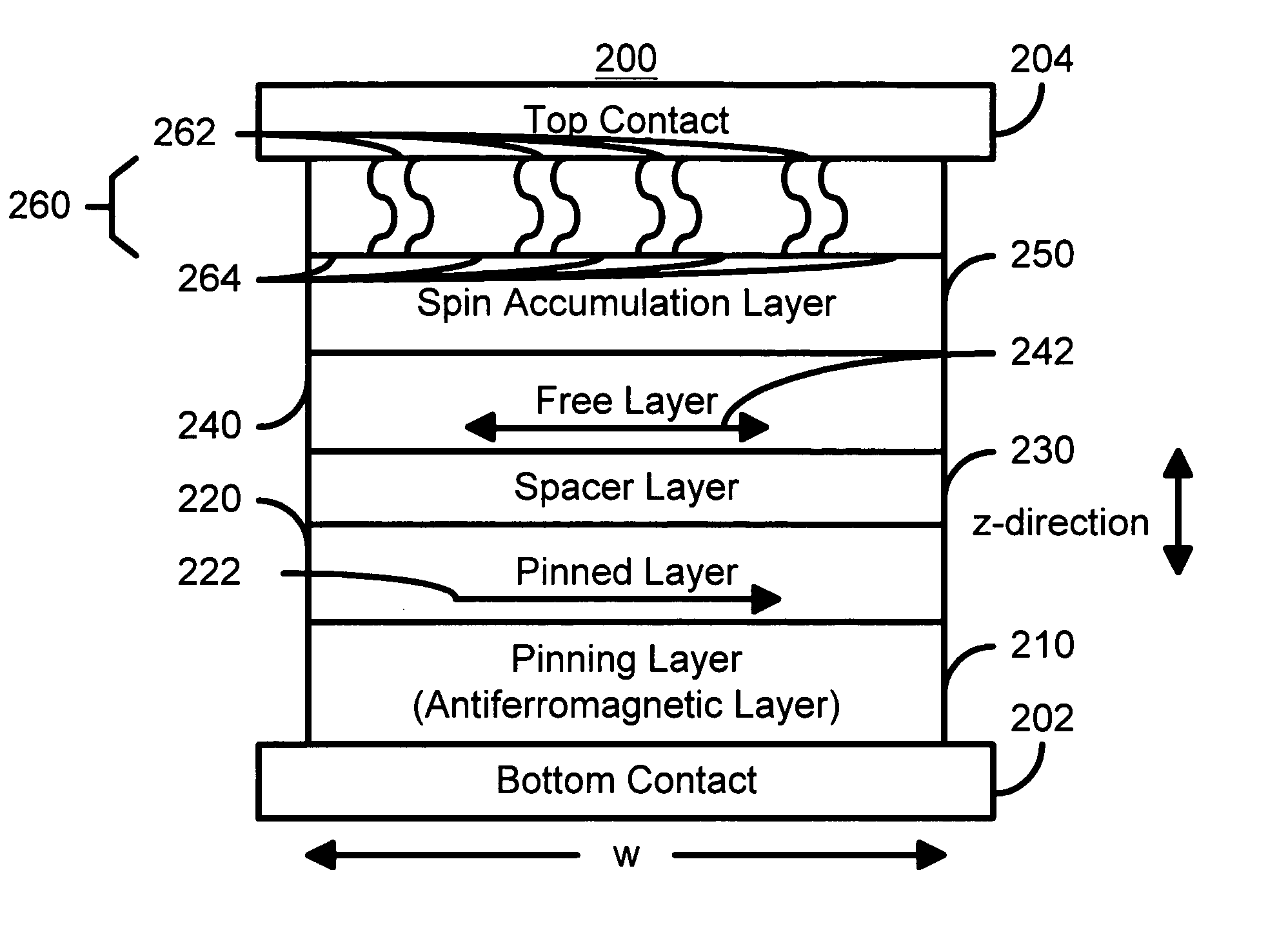Spin barrier enhanced magnetoresistance effect element and magnetic memory using the same
a technology of enhanced magnetoresistance and magnetic memory, applied in the field of magnetic memory systems, can solve the problems of large transistor size and high power consumption, and achieve the effects of reducing the contribution of the outer surface, eliminating the damping of spin pumping, and high areal resistan
- Summary
- Abstract
- Description
- Claims
- Application Information
AI Technical Summary
Benefits of technology
Problems solved by technology
Method used
Image
Examples
first embodiment
[0041]To more particularly illustrate the method and system in accordance with the present invention, refer now to FIG. 2A, depicting a portion of a magnetic element 100 in accordance with the present invention having a reduced write current density for spin transfer switching. The magnetic element 100 is preferably used in a magnetic memory, such as a MRAM, in a CPP configuration. Thus, the magnetic element 100 may be used in a memory cell including an isolation transistor (not shown), as well as other configurations of magnetic memories. Moreover, the magnetic element 100 preferably utilizes the two terminals 102 and 104 near the top and bottom, respectively, of the magnetic element 100. However, nothing prevents the use of another number of terminals, for example a third terminal near the center of the magnetic element. The magnetic element 100 includes a pinned layer 120, a spacer layer 130, and a free layer 140. The magnetic element 100 generally also includes a pinning layer 1...
second embodiment
[0062]FIG. 3A depicts a portion of a magnetic element 200 in accordance with the present invention having a reduced write current density for spin The magnetic element 200 is preferably used in a magnetic memory, such as a MRAM, in a CPP configuration. Thus, the magnetic element 200 may be used in a memory cell including an isolation transistor (not shown), as well as other configurations of magnetic memories. Moreover, the magnetic element 200 preferably utilizes the two terminals 202 and 204 near the top and bottom, respectively, of the magnetic element 200. However, nothing prevents the use of another number of terminals, for example a third terminal near the center of the magnetic element. The magnetic element 200 includes a pinned layer 220, a spacer layer 230, a free layer 240, a spin accumulation layer 250, and a spin barrier layer 260. The magnetic element 200 generally also includes a pinning layer 210 used to pin the magnetization 222 of the pinned layer 220, as well as se...
PUM
 Login to View More
Login to View More Abstract
Description
Claims
Application Information
 Login to View More
Login to View More - R&D
- Intellectual Property
- Life Sciences
- Materials
- Tech Scout
- Unparalleled Data Quality
- Higher Quality Content
- 60% Fewer Hallucinations
Browse by: Latest US Patents, China's latest patents, Technical Efficacy Thesaurus, Application Domain, Technology Topic, Popular Technical Reports.
© 2025 PatSnap. All rights reserved.Legal|Privacy policy|Modern Slavery Act Transparency Statement|Sitemap|About US| Contact US: help@patsnap.com



